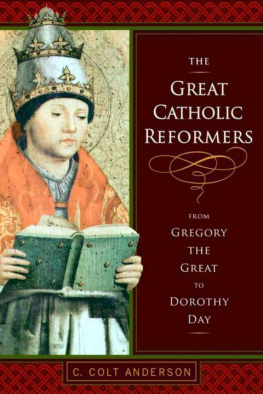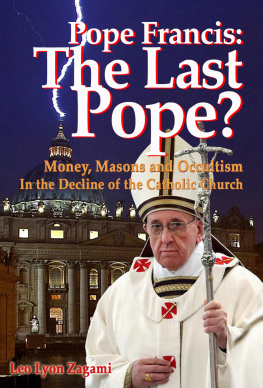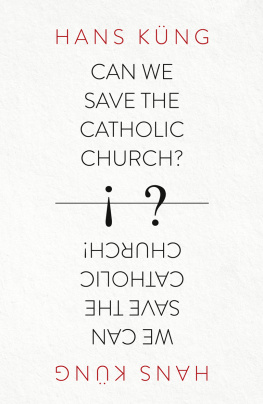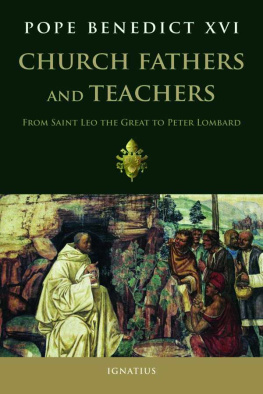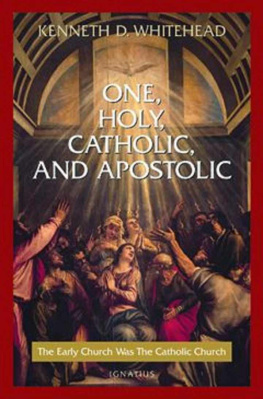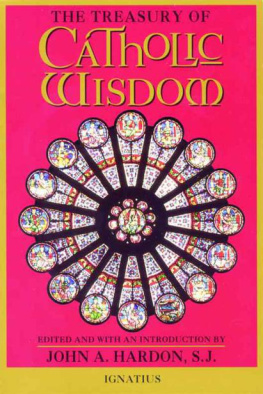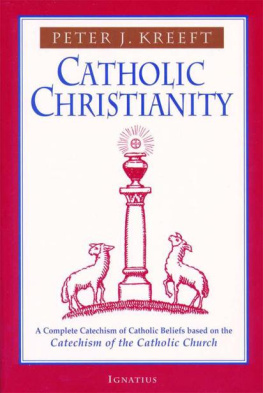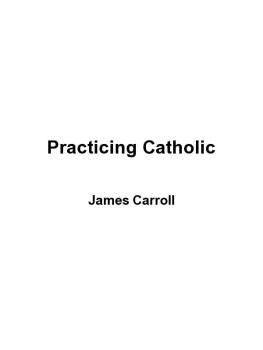From Gregory the Great to Dorothy Day
C. Colt Anderson


.................................................................................................ix
......................................................................................xiii
Chapter 1
...............................................................................1
.............................................................................2
.............................................................................14
..............................22
.......................................................................27
Chapter 2
............................................30
.......................................................................... 38
Chapter 3
...........................56
.........................................................61
.....................................................................64
.........................................74
Chapter 4
....................................79
.......................................................100
..................................................................................102
Chapter 5
.............................. 103
..................................................................111
....................................................................................113
......................................................................117
Chapter 6
..................123
.............................................................140
Chapter 7
.........................................150
.....................................................164
........................................................................169
Chapter 8
....................................................177
........................................................191
Chapter 9
.....................198
.......................................................................................218
................................................................................................225
Why write a book about the great Catholic reformers? It is a question I imagine many of my readers may have. I also expect that some of my readers may be suspicious of my motives. Others may see my work as a positive response to the sex scandal that has been traumatic for so many people. In fact, my interest in reform predates our most contemporary crisis. As for my motive, it can be stated simply: I want to encourage every Catholic to take up the difficult task of reform. My hope is that people will find a model to inspire them that will shit their own temperaments and spiritual dispositions. I intend to provide people with historical arguments, precedents, rhetorical strategies, and theological justifications for reform initiatives and movements. Finally, I want to broaden people's perspectives on what is or can be legitimate reform within a Catholic framework.
My mother inspired me to take up the study of reform. She died from cancer as I was working on this project. Joan Anderson worked for social justice by investigating cases of child abuse, assisting the poor, protecting the elderly, and fighting against discrimination. She was also the prayer leader for a large charismatic community in Savannah, Georgia, back in the heady days of the 1970s. My mother prayed for the sick, attended Mass regularly, tithed, took part in biblical seminars, and participated in the devotion of perpetual adoration. In short, she was devoted to living out the Second Vatican's call for a more active laity. Joan Anderson loved the church, but she never turned a blind eye to its faults.
In the late 1970s, my mother became aware of a scandalous and adulterous affair between a local priest and a parishioner. She decided to inform the bishop, Raymond W. Lessard, about the problem. As she loved to tell her friends, Bishop Lessard was not happy to receive this news and responded, "Who do you think you are? You are just a layperson, and you are only a woman." My mother answered that if God could speak wisdom and good counsel through Balaam's ass, then he could certainly use even a lowly laywoman like herself to give good advice. As we shall see, in one way or another, reformers always have to answer Bishop Lessard's question: "Who do you think you are?"
I am dedicating this book to my mother and to everyone who has stood tip for what is right, only to be dismissed by people holding positions of power in the church. I intend to offer them consolation, encouragement, and theological resources. Since I am trying to reach as many people as possible, I have avoided highly technical language and have employed a narrative approach to the history of reform. The notes will lead the reader to more technical studies, translations, and critical editions of texts. Though there are references to studies in French, German, and Italian, I have concentrated the notes on sources written in English that are reasonably available. My hope is to make it easy for professors, teachers, and priests to use this book to create courses on reform. In the cases involving Italian scholarship, I have had to rely heavily on English or French treatments of the material because my ability to read Italian is limited.
The use of biblical citations also requires some explanation. The reformers covered in this book frequently use scriptural citations either to justify or to explain their reform work. When they quote scripture, I follow their citations, which frequently differ somewhat from the critical editions and standard translations we use today. This is crucial for preserving the integrity of their work. Because many of the reformers treated in this book draw upon scripture through liturgical texts, the writings of the saints, or from memory, we cannot assume that they always had a biblical text in hand when they quoted scripture. Actually, they were much more comfortable with the ambiguities in the scriptural texts than we are. (In instances where noted by NRSV, I have used the New Revised Standard Version translation.)
Since I want to reach as many people as possible, I have adjusted the translations I have used to gender-neutral language whenever it seemed possible. So when the Latin word homo appears in its various singular and plural forms, I have changed the translations to fit current standards; but in cases where such terms are clearly related to specific men, I leave the gender-specific translations in place. When the reformers used gender-specific language, I followed their usage because it is important for understanding their attitudes, cultural milieus, and objectives. Insofar as these usages reveal the sin of sexism in the history of the church, I believe it would be a mistake to obscure them.

